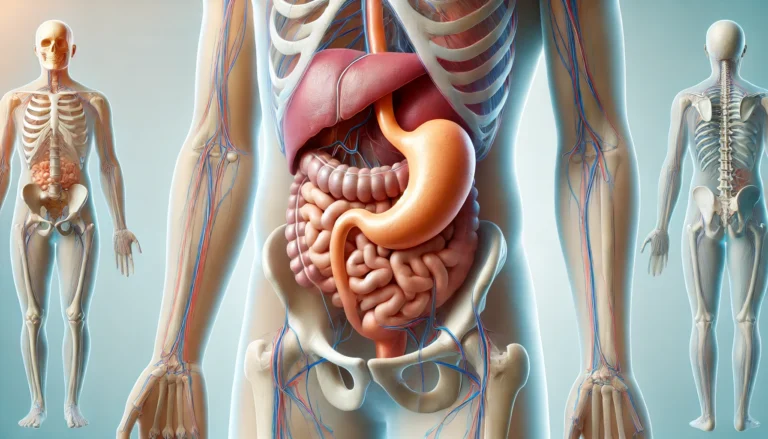When we think of diabetes, the common image that comes to mind is often associated with obesity or being overweight. However, this perception doesn’t capture the full spectrum of individuals affected by the condition. The “skinny diabetic” refers to a lean or underweight person who has diabetes, particularly Type 1 or Type 2 diabetes. Despite their slim physique, these individuals face unique challenges in managing their blood sugar levels and overall health. In this article, we will explore the concept of the “skinny diabetic,” delving into the causes, symptoms, management strategies, and the lifestyle adjustments necessary for maintaining a healthy life.
1. Understanding Diabetes in Lean Individuals
1.1 What is Diabetes?
Diabetes is a chronic condition characterized by high blood sugar levels due to the body’s inability to produce or effectively use insulin. Insulin is a hormone that helps regulate blood sugar by allowing glucose to enter the cells for energy. There are two main types of diabetes: Type 1, where the body doesn’t produce insulin, and Type 2, where the body becomes resistant to insulin or doesn’t produce enough of it.
1.2 The Myth of Obesity and Diabetes
The common misconception is that diabetes only affects overweight or obese individuals. While excess weight is a significant risk factor for Type 2 diabetes, many lean individuals, or “skinny diabetics,” also develop the condition. This highlights the fact that diabetes is not solely a weight-related issue but rather a complex interplay of genetics, lifestyle, and other factors.
1.3 Types of Diabetes Common in Skinny Diabetics
Skinny diabetics can have either Type 1 or Type 2 diabetes. Type 1 diabetes is an autoimmune disorder where the immune system attacks insulin-producing cells in the pancreas, leading to a complete lack of insulin. This type is commonly diagnosed in childhood or adolescence but can occur at any age. Type 2 diabetes, though more commonly associated with obesity, can also affect lean individuals, particularly due to genetic predispositions or other metabolic factors.
2. Causes and Risk Factors for Diabetes in Lean Individuals
2.1 Genetic Predisposition
One of the primary causes of diabetes in lean individuals is genetics. A family history of diabetes significantly increases the risk, regardless of body weight. Genetic mutations affecting insulin production, secretion, or action can predispose a person to develop diabetes even if they are thin.
2.2 Autoimmune Disorders
In Type 1 diabetes, the immune system mistakenly attacks the pancreas, leading to insulin deficiency. This autoimmune response is not related to body weight and can affect anyone, including lean individuals. In some cases, other autoimmune disorders can also contribute to the development of diabetes.
2.3 LADA (Latent Autoimmune Diabetes in Adults)
LADA is a form of diabetes that shares characteristics with both Type 1 and Type 2 diabetes. It is often misdiagnosed as Type 2 diabetes because it occurs in adults, but it progresses more slowly than typical Type 1 diabetes. People with LADA are often lean and may not require insulin initially, but over time, their condition worsens, necessitating insulin therapy.
2.4 Environmental and Lifestyle Factors
While less common in lean individuals, lifestyle factors such as poor diet, sedentary behavior, and high stress levels can contribute to the development of Type 2 diabetes. Even in the absence of obesity, these factors can lead to insulin resistance and metabolic syndrome, increasing the risk of diabetes.
3. Symptoms and Diagnosis of Diabetes in Lean Individuals
3.1 Common Symptoms
The symptoms of diabetes are similar in both lean and overweight individuals. These include excessive thirst, frequent urination, unexplained weight loss, fatigue, blurred vision, and slow-healing sores. However, in lean individuals, weight loss may be more pronounced and noticeable, often leading to the initial diagnosis.
3.2 How Diagnosis is Made
Diagnosis of diabetes in lean individuals follows the same procedures as for others. Blood tests such as fasting blood sugar, HbA1c, and oral glucose tolerance tests are used to measure blood sugar levels. In cases where Type 1 diabetes or LADA is suspected, additional tests to detect autoimmune antibodies may be conducted.
3.3 Challenges in Early Diagnosis
Because diabetes is often associated with obesity, lean individuals may not be as quickly diagnosed, especially with Type 2 diabetes. Symptoms may be attributed to other causes, delaying proper treatment. Awareness and vigilance by both patients and healthcare providers are crucial for timely diagnosis.
4. Managing Diabetes as a Lean Individual
4.1 The Importance of Personalized Treatment Plans
The management of diabetes in skinny diabetics requires a personalized approach that considers their unique physiological needs. Standard diabetes treatments that emphasize weight loss may not be appropriate for lean individuals. Instead, the focus should be on maintaining a healthy weight, optimizing blood sugar control, and preventing complications.
4.2 Insulin Therapy
For many lean individuals with Type 1 diabetes or LADA, insulin therapy is essential. The dosage and type of insulin must be carefully tailored to prevent hypoglycemia, which can be more common in lean individuals due to their lower body fat reserves.
4.3 Oral Medications
In Type 2 diabetes, oral medications that increase insulin sensitivity or stimulate insulin production may be prescribed. However, in lean individuals, the risk of hypoglycemia must be carefully managed, and medications should be adjusted accordingly.
4.4 Diet and Nutrition for the Skinny Diabetic
Diet plays a crucial role in managing diabetes. Lean individuals need to focus on a balanced diet that provides enough calories to maintain a healthy weight while controlling blood sugar levels. This may include:
- Carbohydrate Counting: To manage blood sugar spikes, lean diabetics should monitor their carbohydrate intake and choose complex carbohydrates with a low glycemic index.
- Protein and Healthy Fats: Adequate protein and healthy fats are essential for maintaining muscle mass and providing sustained energy.
- Meal Timing: Regular meals and snacks help maintain stable blood sugar levels throughout the day.
4.5 Exercise and Physical Activity
Exercise is beneficial for all diabetics, but lean individuals need to be cautious to avoid excessive weight loss. The goal should be to maintain fitness and cardiovascular health without compromising body weight. Resistance training can help build muscle mass, while moderate aerobic exercise can improve insulin sensitivity.
5. Unique Challenges Faced by Skinny Diabetics
5.1 Risk of Hypoglycemia
Lean individuals with diabetes, especially those on insulin therapy, are at a higher risk of hypoglycemia (low blood sugar). This can be dangerous if not managed properly, leading to symptoms like dizziness, confusion, and in severe cases, loss of consciousness. Regular monitoring and appropriate adjustments to diet, exercise, and medication are essential to prevent hypoglycemia.
5.2 Maintaining a Healthy Weight
For skinny diabetics, maintaining a healthy weight is a significant challenge. Unlike overweight individuals, they may struggle to gain or maintain weight, particularly if they are on insulin or other glucose-lowering medications. Working with a dietitian to create a calorie-rich, nutrient-dense meal plan can be beneficial.
5.3 Managing Public Perception and Misconceptions
The stereotype that diabetes only affects overweight individuals can lead to misconceptions and misunderstandings about the condition in lean individuals. Skinny diabetics may face judgment or skepticism when discussing their diagnosis, which can be emotionally challenging. Education and advocacy are important for raising awareness about the diverse presentations of diabetes.
6. Long-Term Health Considerations for Skinny Diabetics
6.1 Monitoring and Preventing Complications
Despite their lean physique, skinny diabetics are still at risk of the long-term complications associated with diabetes, including cardiovascular disease, neuropathy, retinopathy, and kidney disease. Regular medical check-ups, blood tests, and proactive management of blood sugar levels are essential to prevent these complications.
6.2 Mental and Emotional Well-Being
Living with diabetes can be stressful, particularly for lean individuals who may feel isolated or misunderstood. It’s important to address the mental and emotional aspects of the condition, whether through counseling, support groups, or stress management techniques. Mental health is a crucial component of overall well-being for any diabetic.
6.3 The Role of Technology in Diabetes Management
Advances in technology, such as continuous glucose monitors (CGMs) and insulin pumps, have revolutionized diabetes management. These tools can be particularly useful for lean diabetics, allowing for more precise blood sugar control and reducing the risk of hypoglycemia. Staying informed about the latest developments in diabetes care can help skinny diabetics manage their condition more effectively.
7. Living a Full Life as a Skinny Diabetic
7.1 Building a Support Network
Having a strong support network is vital for anyone living with diabetes. For skinny diabetics, connecting with others who share similar experiences can provide encouragement, advice, and a sense of community. This can be achieved through online forums, local support groups, or even social media.
7.2 Setting and Achieving Personal Health Goals
Living with diabetes doesn’t mean giving up on personal goals or dreams. Skinny diabetics can lead full, active lives by setting realistic health goals, such as improving blood sugar control, maintaining a healthy weight, or achieving fitness milestones. Working with healthcare professionals to create a tailored plan can help in reaching these goals.
7.3 Empowering Yourself with Knowledge
Education is empowerment. Understanding the intricacies of diabetes and how it affects your body is key to effective management. Skinny diabetics should take an active role in learning about their condition, staying updated on new treatments, and advocating for their health needs.
Conclusion: Embracing Life as a Skinny Diabetic
Being a “skinny diabetic” comes with its own set of challenges and misconceptions. It’s essential to recognize that diabetes is not exclusively linked to body weight; lean individuals can also experience this complex condition. Understanding the unique aspects of managing diabetes as a lean person is crucial for maintaining overall health and well-being.
Through personalized treatment plans that include careful monitoring of blood sugar levels, tailored dietary choices, and appropriate exercise routines, skinny diabetics can effectively manage their condition. Additionally, addressing the emotional and mental health aspects of living with diabetes is equally important. Building a strong support network, empowering oneself with knowledge, and setting achievable health goals can lead to a fulfilling and active life.
By embracing their identity as a skinny diabetic, individuals can navigate the complexities of diabetes with confidence and resilience, paving the way for a healthy and balanced lifestyle.













